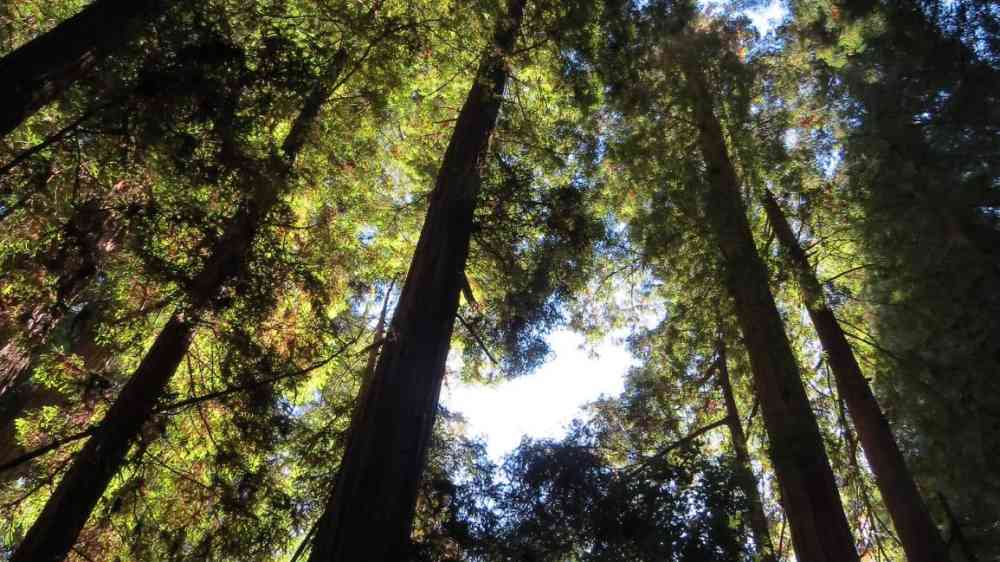
Report: Indigenous Knowledge and Western Science for Forest Stewardship

Introduction
There are 154 national forests in the United States, covering nearly 300,000 square miles of forests, woodlands, shrublands, wetlands, meadows, and prairies.
These lands are increasingly recognized as vital for supporting a broad diversity of plant and animal life; for water and nutrient cycling; and for the human communities that depend on forests and find cultural and spiritual significance within them. Forests could also be potential bulwarks against climate change. But, increasingly severe droughts and wildfires, invasive species, and large insect outbreaks — all intensified by climate change — are straining many national forests and surrounding lands.
The Report
A report by a team of 40 experts outlines a new approach to forest stewardship that “braids together” Indigenous knowledge and Western science to conserve and restore more resilient forestlands. Published on March 25, the report provides foundational material to inform future work on climate-smart adaptive management practices for USDA Forest Service land managers.
“Our forests are in grave danger in the face of climate change,” said Cristina Eisenberg, an associate dean of forestry at Oregon State University. “By braiding together Indigenous knowledge with Western science, we can view the problems with what is known as ‘Two-Eyed Seeing,’ to develop a path forward that makes our forests more resilient to the threats they are facing. That is what this report is working to accomplish.”
Eisenberg co-led the report team with Susan Prichard, a fire ecologist in the School of Environmental and Forest Sciences at the University of Washington.
“Climate change is stressing these forests even as they are considered for their potential role in slowing rates of climate change,” said Prichard. “We want this report to provide not just guidance, but also hope — hope in the practical measures we can take now to promote resiliency and help forests thrive.”
Sustainable Development Goals (SDGs)
The report aligns with several Sustainable Development Goals (SDGs) established by the United Nations:
- SDG 13: Climate Action
- SDG 15: Life on Land
- SDG 17: Partnerships for the Goals
Indigenous Knowledge and Western Science
Initiated by interest from the Forest Service on Indigenous knowledge and Western science, the report stems from direction to protect old and mature forests outlined in Executive Order 14072, signed by President Joe Biden in April 2022. These types of forests, some hundreds of years old, are often dominated by larger trees, with fewer seedlings and saplings. Some management practices over the past century have made many of these forests vulnerable to drought, fire, insects, and other stressors, all of which will likely increase with climate change.
The executive order included guidance on strengthening relationships with tribal governments and emphasized the importance of Indigenous knowledge, a theme highlighted repeatedly in the new report. This knowledge includes the time-tested practices of Indigenous stewardship that for millennia shaped forest structure and species composition. Following European colonization, these practices were sharply curtailed by genocide, displacement, and forced assimilation of Indigenous peoples. Western scientists increasingly recognize that Indigenous stewardship practices built and maintained forests that were more resilient and ecologically diverse than today.
Many Indigenous cultures, for example, used a practice called intentional burning — also known as cultural burning — which decreased forest density, promoted healthy understory growth, and hosted a broad diversity of plant and animal life. These practices over time yielded “mosaics” of forests made up of diverse patches of trees varying in age, density, and overstory and understory composition. These “mosaic” forests are less prone to the types of large, severe wildfires that have burned swathes of North American forests this century, according to Prichard.
Core Leadership Team
Other members of the core leadership team for the report are Paul Hessburg, a senior research ecologist with the Forest Service’s Pacific Northwest Research Station, and Michael Paul Nelson, a professor and director of the Center for the Future of Forests and Society at OSU.
“Two powerful ideas we heard from our Indigenous colleagues in developing this are those of reciprocity and the seven generations principle. Collectively, the writing team agrees that we can frame a more sustainable land ethic with these ideas,” said Hessburg. “These perspectives guided our recommendations, which suggest taking from the land and giving back in equal measure, and proactively stewarding these lands with seven generations in mind.”
Collaborators
Report co-authors come from tribal nations, universities, U.S. Forest Service research stations, consulting groups, Natural Resources Canada, Parks Canada, and Tall Timbers Research Station and Land Conservancy.
“Our report is deeper than changes in policy and management — it proposes a fundamental change in the worldview guiding our current practices,” said Nelson. “Our writing team’s cultural, geographic, and disciplinary diversity allows for guidance on a shift in paradigms around how we approach forest stewardship in the face of climate change.”
Implications for
SDGs, Targets, and Indicators
1. Which SDGs are addressed or connected to the issues highlighted in the article?
- SDG 13: Climate Action
- SDG 15: Life on Land
- SDG 17: Partnerships for the Goals
The article discusses the impact of climate change on national forests and the need for conservation and restoration efforts. This aligns with SDG 13, which focuses on taking urgent action to combat climate change and its impacts. Additionally, the article emphasizes the importance of preserving biodiversity and ecosystems in national forests, which relates to SDG 15, which aims to protect, restore, and promote sustainable use of terrestrial ecosystems. Finally, the article mentions partnerships between Indigenous knowledge and Western science, highlighting the importance of collaboration and partnerships in achieving sustainable development, as emphasized in SDG 17.
2. What specific targets under those SDGs can be identified based on the article’s content?
- SDG 13.1: Strengthen resilience and adaptive capacity to climate-related hazards and natural disasters
- SDG 15.1: By 2020, ensure the conservation, restoration, and sustainable use of terrestrial and inland freshwater ecosystems and their services
- SDG 17.16: Enhance the global partnership for sustainable development, complemented by multi-stakeholder partnerships that mobilize and share knowledge, expertise, technology, and financial resources
The article highlights the need to strengthen resilience and adaptive capacity in national forests to climate-related hazards and natural disasters, which aligns with SDG 13.1. It also emphasizes the importance of conserving and restoring terrestrial ecosystems, which relates to SDG 15.1. Additionally, the article emphasizes the need for partnerships and collaboration between Indigenous knowledge and Western science, which aligns with SDG 17.16.
3. Are there any indicators mentioned or implied in the article that can be used to measure progress towards the identified targets?
- Indicator for SDG 13.1: Number of national forests implementing climate-smart adaptive management practices
- Indicator for SDG 15.1: Percentage of national forests with conservation and restoration plans in place
- Indicator for SDG 17.16: Number of partnerships between Indigenous communities and forest service agencies
The article mentions the development of climate-smart adaptive management practices for national forests, which can be used as an indicator for measuring progress towards SDG 13.1. It also discusses the need for conservation and restoration plans for national forests, which can serve as an indicator for measuring progress towards SDG 15.1. Additionally, the article highlights the importance of partnerships between Indigenous communities and forest service agencies, which can be used as an indicator for measuring progress towards SDG 17.16.
4. Table: SDGs, Targets, and Indicators
| SDGs | Targets | Indicators |
|---|---|---|
| SDG 13: Climate Action | 13.1: Strengthen resilience and adaptive capacity to climate-related hazards and natural disasters | Number of national forests implementing climate-smart adaptive management practices |
| SDG 15: Life on Land | 15.1: By 2020, ensure the conservation, restoration, and sustainable use of terrestrial and inland freshwater ecosystems and their services | Percentage of national forests with conservation and restoration plans in place |
| SDG 17: Partnerships for the Goals | 17.16: Enhance the global partnership for sustainable development, complemented by multi-stakeholder partnerships that mobilize and share knowledge, expertise, technology, and financial resources | Number of partnerships between Indigenous communities and forest service agencies |
Copyright: Dive into this article, curated with care by SDG Investors Inc. Our advanced AI technology searches through vast amounts of data to spotlight how we are all moving forward with the Sustainable Development Goals. While we own the rights to this content, we invite you to share it to help spread knowledge and spark action on the SDGs.
Fuente: preventionweb.net

Join us, as fellow seekers of change, on a transformative journey at https://sdgtalks.ai/welcome, where you can become a member and actively contribute to shaping a brighter future.






